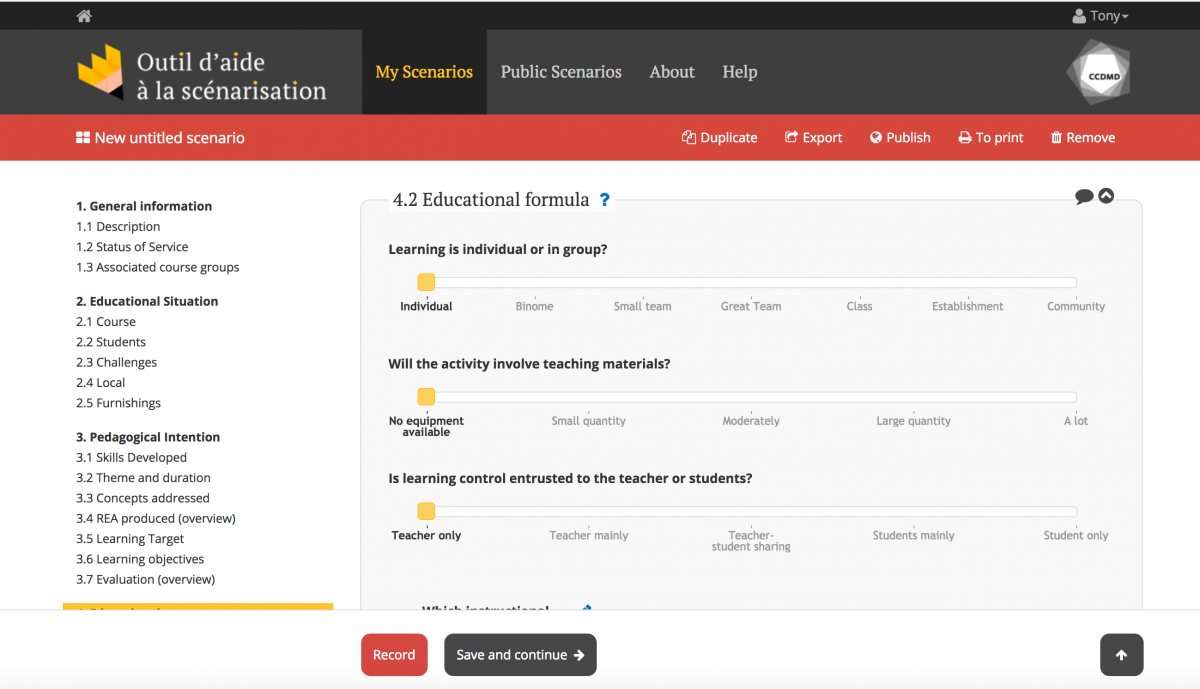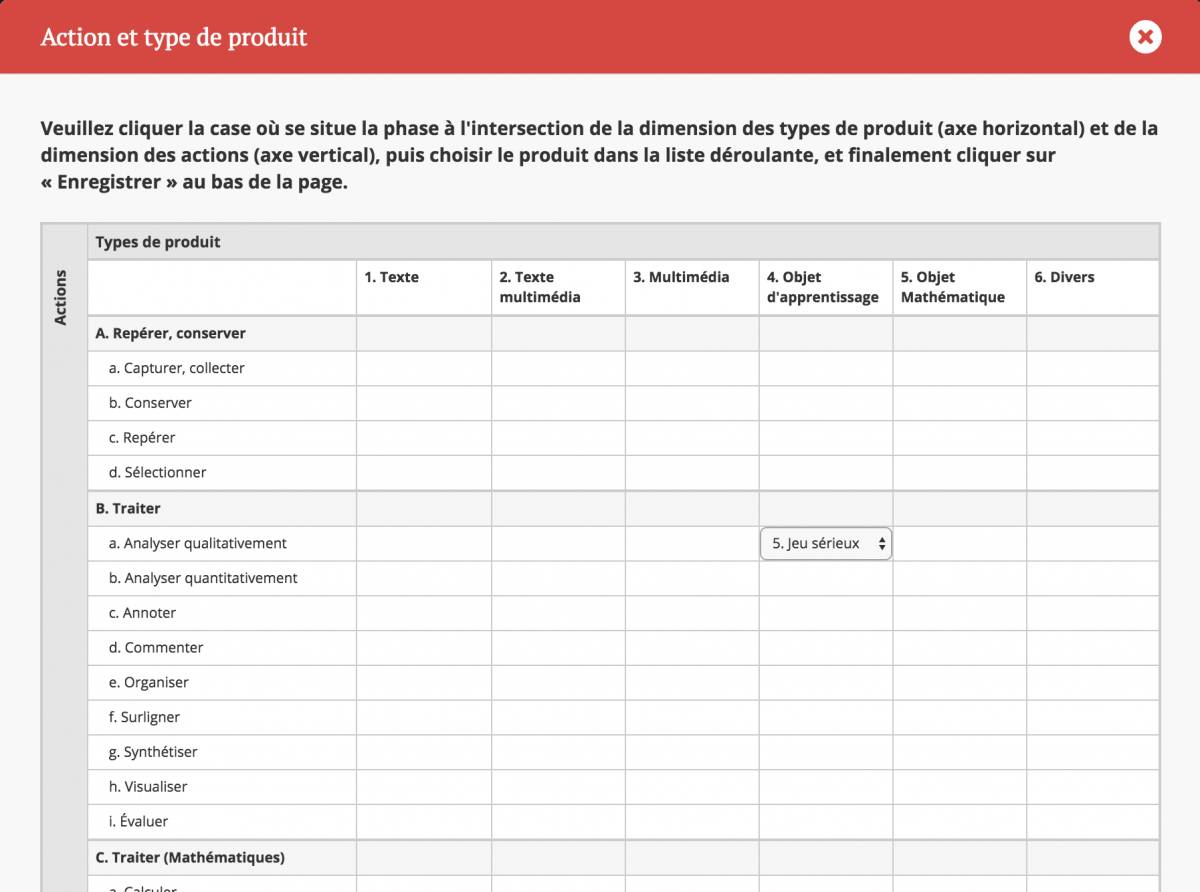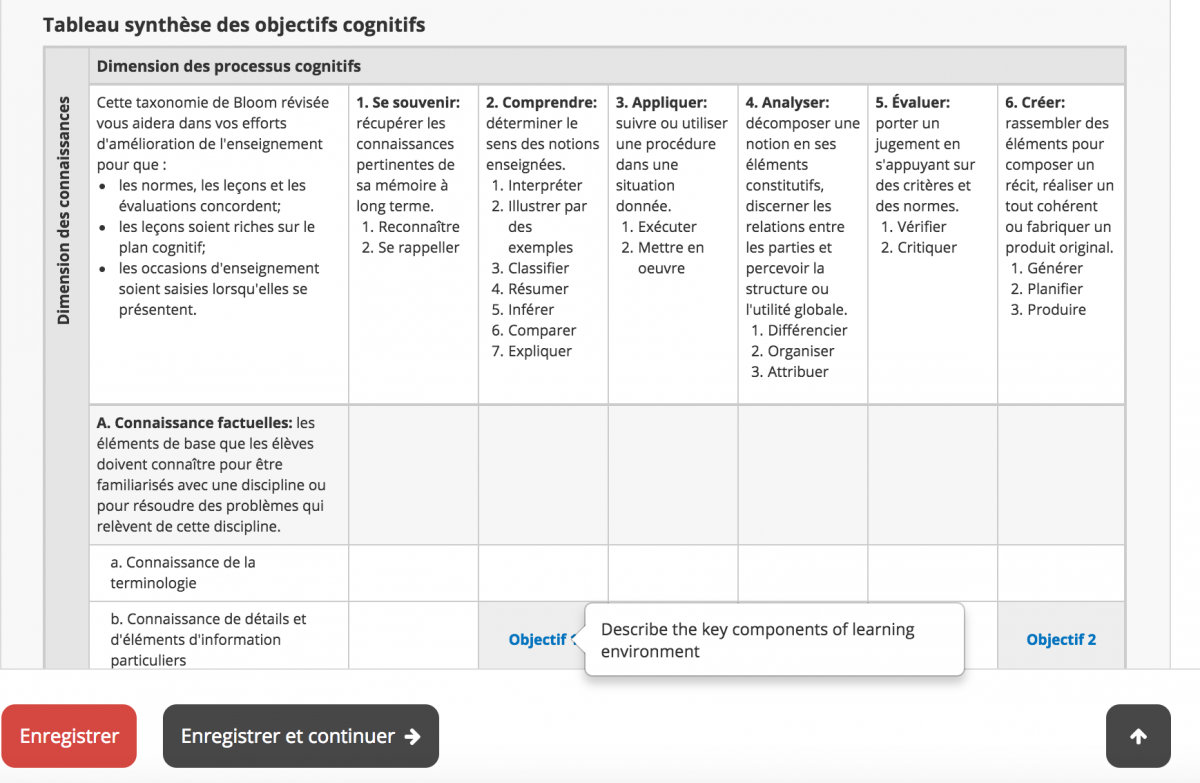Opportunity
Faculty and instructors in post-secondary education are facing increasing challenges from new learning technologies, larger classes, greater diversity of students, and an increasing focus on skills development. This in many cases requires instructors to take a more design-oriented approach to teaching.
Partly in response to this demand for more pedagogical and learning design support for instructors and faculty in the province of Québec, Bruno Poellhuber, an Associate Professor in the Faculty of Education at the Université de Montréal in Québec, and his colleagues have developed a web-based expert system, OAS (Outil d’Aide à la Scénarisation: a tool to help construct teaching scenarios).
Innovation
Educational design facilitates the rigorous planning of teaching and learning activities, with or without the use of learning technologies. Many models of educational design were created but these formal methods are not within the reach of teachers, who have little time to invest in them.
The OAS toolkit guides users in the design and preparation of teaching-learning contexts or scenarios, focusing on active pedagogical approaches and the selective use of information and communications technologies. It adopts a simplified but rigorous approach based on the ADDIE instructional design model (Analysis, Design, Development, Implementation, and Evaluation). The tool can be used for the design of a short teaching module, a workshop, a course or any other learning context.
The tool can be openly accessed through this site: http://oas.ccdmd.qc.ca/. Users need to register and can keep their scenarios private or share them publicly. Each scenario can be printed. The toolkit was designed specifically for teaching in general or vocational colleges (CEGEPs in Québec), but it can also be used for university teaching or company training.
The step-by-step approach uses a set of web forms completed by the instructor, using the following headings:
- General information
1.1 Description
1.2 Visibility of scenario (e.g. private or public)
1.3 Associated instructor/colleagues - Educational Context
2.1 Course
2.2 Students (characteristics, etc.)
2.3 Challenges in teaching the course
2.4 Location of teaching
2.5 Available teaching equipment/resources - Pedagogical Intention
3.1 Skills to be developed
3.2 Topic and duration of teaching unit
3.3 Concepts addressed
3.4 Learner outputs/products (e.g. writing, discussion)
3.5 Learning outcomes
3.6 Learning objectives domains (cognitive, emotional, psychomotor)
3.7 Student assessment method (overview) - Educational strategy
4.1 Learning approach (analogue, didactic, dialectic, divergent, inductive)
4.2 Educational formula, e.g. group or individual, learner or instructor control, amount of equipment
4.3 Learner outputs/products (details)
4.4 Student assessment (details) - Implementation5.1 Reminder of Choices5.2 Steps in implementation
- Scenario review6.1 Learning Objectives6.2 Educational formula6.3 Selection of media
- Evaluation (of the teaching)7.1 Planning7.2 Results
OAS facilitates the development of teaching contexts or scenarios that foster student engagement and activity, since the designers of the tool claim any learning should result in the concrete realization of some activity carried out by the students that will be visible by others.
There is a help system offered online for each section which provides sources and background to assist the instructor in their decision-making.
Depending on the characteristics of the scenario or learning context an instructor wishes to produce (more or less centred on the students, more or less mediated, more or less collaborative – see Figure 1 below), the toolkit helps the instructor to work out the most appropriate teaching approach or ‘educational formula’.

Figure 1: Screen shot from OAS: the user slides the buttons to choose alternatives along a continuum. Note the screen shot is a translation from the original French via Google Translate
OAS also includes a typology of teaching media and technologies, to assist users in their choices by initiating reflection on the cognitive functions they support - see Figure 2 below.

Figure 2: Using this matrix, the instructor chooses which media product best matches a particular learning activity: in this case, an educational game (jeu sérieux) was chosen by the instructor to support a qualitative analysis
When the instructor enters answers or made choices in earlier sections of the tool, the tool produces a synthesis or summary of the decisions. For instance, in Figure 3 below, the matrix shows where a particular learning objective (‘describe the key components of a learning environment’) is situated in relation to both Bloom’s categorization of learning objectives (along the top of the screen – in this case ‘understanding’) and the type of knowledge students must master (down the side of the screen – in this case ‘factual knowledge’).

Figure 3: Summary table of cognitive objectives
At the end of the process, a summary of the key decisions made by the instructor is generated and this can be printed or exported as necessary.
To date the scenario is available only in French.
Benefits and Outcomes
Although the tool is mostly in a prototype or beta stage until recently, over 1,500 instructors accessed the site to date and more than 750 created scenarios, despite little publicity or marketing.
The toolkit allows the instructor to reflect, justify their choices in private or public pedagogical notes, and to share (or not) the scenario and the associated teaching materials with others.
The construction of the tool is open enough to add new methods and factors for consideration through editable lists.
Challenges and Enhancements
The Francophone version is now finalized and was programmed so it is easy to convert to other languages, but more money is needed to do that.
The tool was developed through a grant, but ongoing funding is required for maintenance, although the software is now stable.
The designers would like to build more intelligence into the software to provide better guidance and more options by better linking together answers to different questions but again this requires more development money.
The adoption of the tool is dependent on the acceptance of an objective and deductive systems approach to learning design, although there is a great deal of choice in how an instructor can work through the process.
Potential
In the past, fully online learning was most successfully developed using a team approach involving instructors working with instructional designers, who provide both technological and pedagogical support. However, a relatively small proportion of courses in campus-based institutions are fully online, whereas blended learning is rapidly increasing. This is likely to result in increasing demands for instructional design support.
New ways of supporting faculty in their teaching are required, and this tool provides an on-demand, always available, guide to the design of teaching for instructors who do not have direct instructional design support easily available.
Reference
Poellhuber, B. & St-Laurent-Fournier, S. (2014) ‘Les TIC pour favoriser et soutenir l’apprentissage’, in L. Ménard & L. Saint-Pierre (eds.), Enseigner pour faire apprendre au collégial et à l’université. Montréal, Québec : Chenelière Éducation.
Further information
Bruno Poellhuber
Department of Psychopedagogy and Androgy,
Faculty of Education
Université de Montréal
Québec
[email protected]


